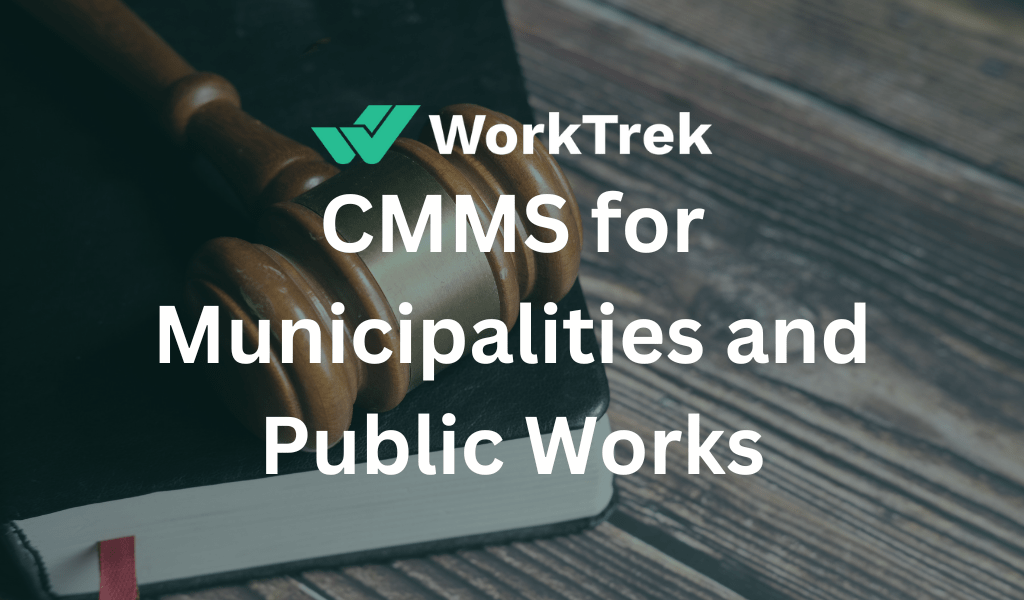Get a Free WorkTrek Demo
Let's show you how WorkTrek can help you optimize your maintenance operation.
Try for freeIntroduction
CMMS for municipalities and public works departments are responsible for maintaining key components of the infrastructure that support communities, such as parks, transportation networks, public fleets, health and safety resources, and utilities.
Proper maintenance of these assets helps improve the quality of life, commerce, transportation and communications and contributes to economic growth and community development. Regular maintenance is a more cost-effective approach than repairing or replacing equipment that has been neglected for too long.

What Is A CMMS?
The acronym CMMS stands for Computerized Maintenance Management System. This software package was designed to manage maintenance practices globally, on a strategic, financial, and operational level. Today CMMS for the industrial sector is essential. Much more than simple computer programming, it is an assistant for maintenance teams, the cornerstone of industrial efficiency.
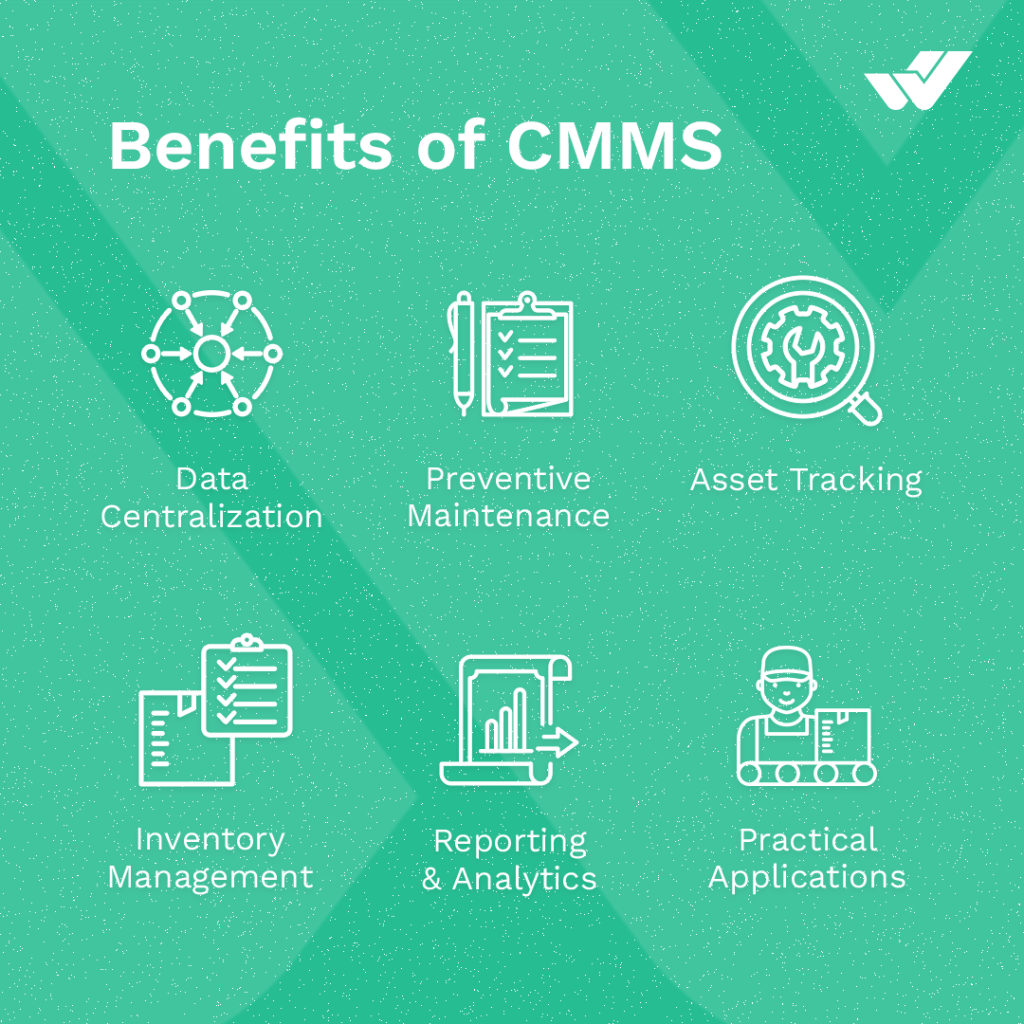
What are Municipalities?
Municipalities are local administrative units or political subdivisions of a country, typically found at the city or town level. They are responsible for providing various public services and governing a defined geographic area. The specific structure, functions, and responsibilities of municipalities can vary widely from one country to another, and sometimes even within a single country. However, they generally share some common features:
- Government: Municipalities are a form of local government that operates at a more localized level than regional or national governments. They have the authority to make decisions and regulations that affect the daily lives of residents within their boundaries.
- Geographic Jurisdiction: Each municipality is assigned a specific geographic area or territory, which can include cities, towns, villages, or other similar localities. The size and population of a municipality can vary greatly.
- Services: Responsible for providing essential local services, such as water supply, sanitation, waste management, transportation, local law enforcement, and fire protection. They may also oversee urban planning, zoning, and land use regulations.
- Revenue Generation: Often have the authority to collect taxes, fees, and other revenues to fund local services and infrastructure projects.
- Community Development: Municipalities may engage in community development initiatives, economic development, and other projects to improve the quality of life in their jurisdiction.
It’s important to note that the names and specific responsibilities of municipalities can vary from one country to another. In some places, they may be called cities, towns, counties, or other terms. The relationship between municipalities and higher levels of government, such as states or provinces, can also differ depending on the political and administrative structure of the country.

What are Public Works?
Public works refer to a broad category of projects, services, and physical infrastructure that are provided and maintained by the government at various levels (local, regional, or national) for the benefit of the public. Public works play a crucial role in supporting the functioning of society, ensuring public safety, and promoting economic development. These projects and services can encompass a wide range of areas, including:
- Transportation: This category includes the construction and maintenance of roads, highways, bridges, tunnels, airports, and public transit systems. Public transportation, such as buses and trains, also falls under this category.
- Utilities: Departments for Public works often manage utilities like water supply, sewage systems, and wastewater treatment plants. They ensure that communities have access to clean and safe drinking water and handle the treatment and disposal of wastewater.
- Energy: Can involve energy infrastructure, such as the construction and maintenance of power plants, electrical grids, and other energy distribution systems.
- Public Buildings: The construction and maintenance of public buildings like government offices, schools, libraries, police stations, fire stations, and community centers fall under this category.
- Waste Management: They are responsible for the collection, recycling, and disposal of solid waste and the operation of landfills and recycling facilities.
- Parks and Recreation: Parks, recreational facilities, and green spaces are often developed and maintained by public works departments to provide leisure and recreational opportunities for the community.
- Infrastructure Maintenance: Regular maintenance and repair of existing infrastructure, such as roads, bridges, and public buildings, are essential to ensure their safety and longevity.
Public works are typically funded through public budgets, which means they are financed by taxpayers or through government grants and loans. The responsibility for public works can vary from one level of government to another.
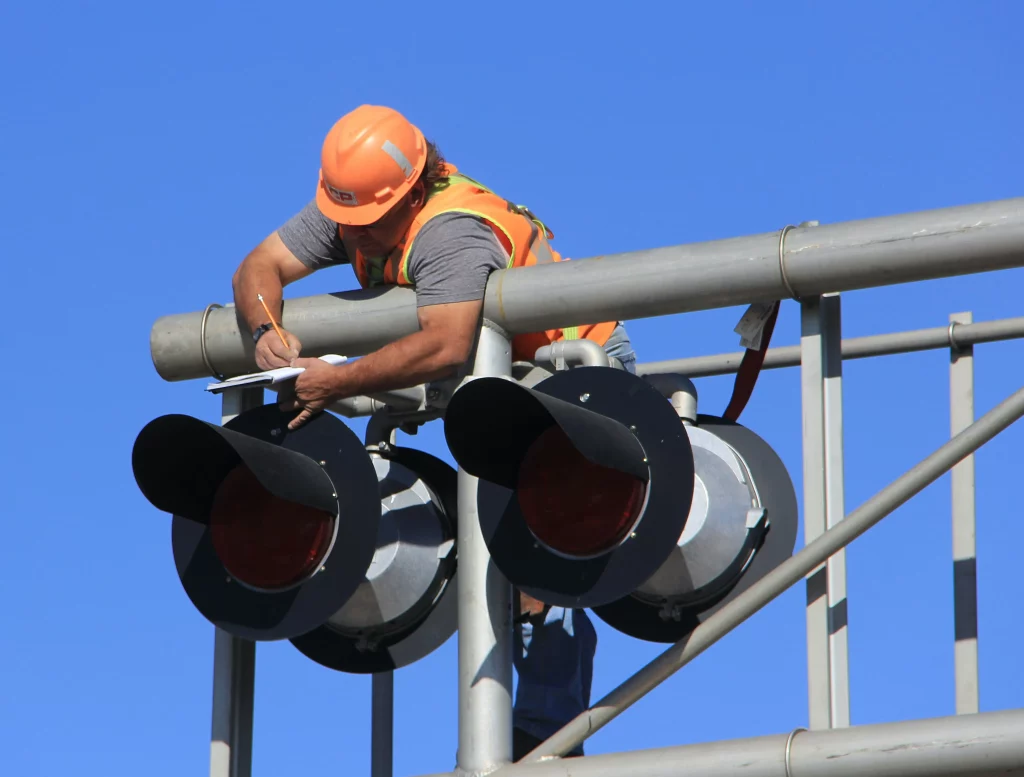
Why Municipalities and Public Works Should Use CMMS?
Computerized Maintenance Management System (CMMS) is a software solution designed to help organizations, including municipalities and public works departments, efficiently manage and maintain their assets, facilities, equipment, and infrastructure. There are several compelling reasons why municipalities and public works should consider using CMMS:
Streamlined Maintenance Management: CMMS software helps streamline the entire maintenance management process, from scheduling and work order generation to tracking and reporting. This leads to increased efficiency and reduced downtime.
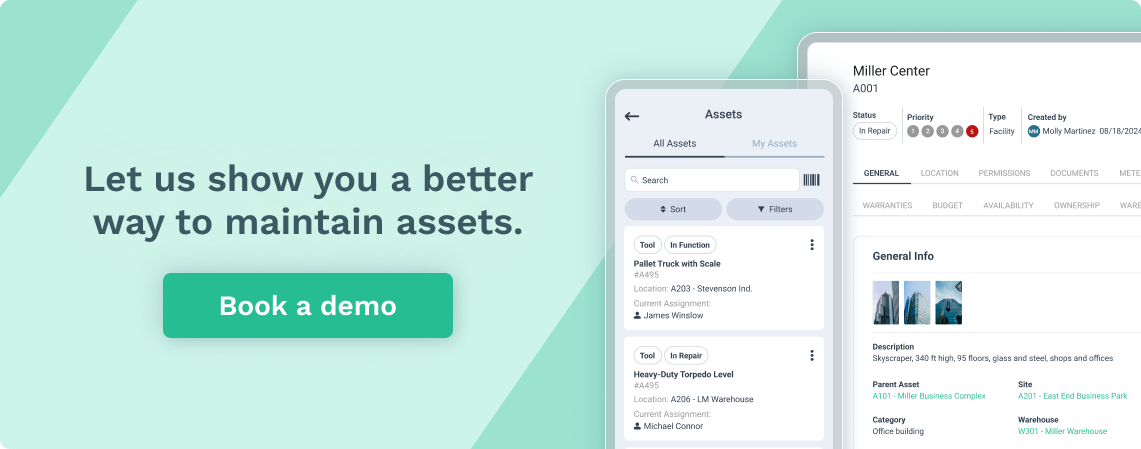
Asset Management: Allows municipalities to catalog and track all their assets, such as vehicles, infrastructure, and facilities, making it easier to monitor their condition, manage lifecycle costs, and plan for replacements or upgrades.
Preventive Maintenance: Enables the implementation of preventive maintenance programs. By scheduling regular maintenance tasks based on asset usage or time intervals, municipalities can extend the lifespan of their equipment and reduce unexpected breakdowns.
Inventory Management: Software can help manage spare parts and supplies inventory more efficiently. It ensures that the right parts are available when needed, reducing downtime and avoiding excessive stockpiling.
Work Order Management: CMMS simplifies the creation and tracking of work orders, making it easier to assign tasks, monitor progress, and ensure that maintenance jobs are completed on time.
Mobile Access: Many CMMS solutions offer mobile applications, allowing maintenance personnel to access the system while in the field. This real-time access can increase efficiency and responsiveness.
Customer Service: For municipalities, CMMS can help improve response times for service requests and enhance overall customer service by efficiently managing citizen-reported issues.
Asset Performance Monitoring: CMMS can provide data and analytics to assess the performance of assets and infrastructure, allowing municipalities to make data-driven decisions about repairs, upgrades, or replacements.

Supercharge your maintenance with WorkTrek CMMS!
Book a WorkTrek demo to see how a CMMS can help your business.
Try for freeWhat Problems Can Municipalities and Public Works Face If They Don’t Use CMMS?
Municipalities and public works departments that do not use a Computerized Maintenance Management System (CMMS) may encounter several challenges and problems in their operations. Some of these issues include:
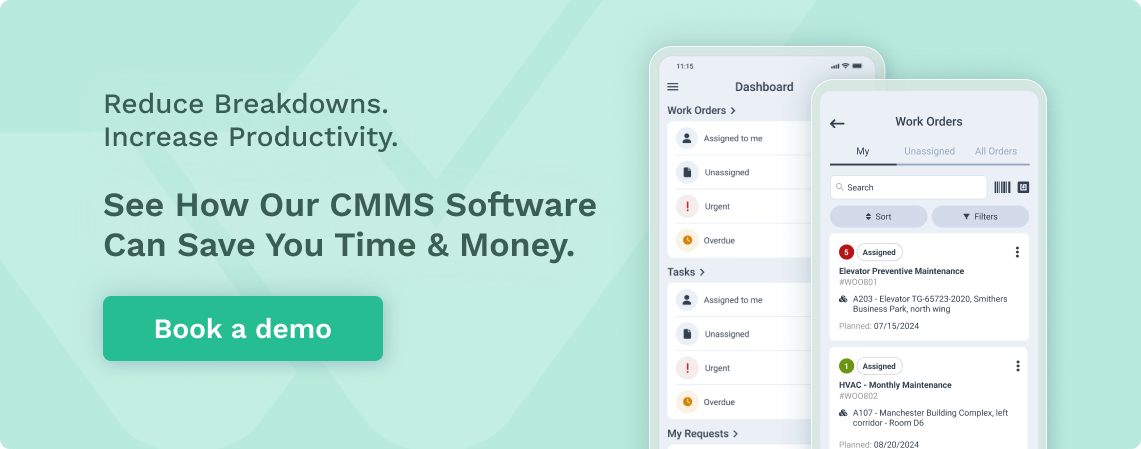
Inefficient Maintenance Processes: Without a CMMS, maintenance processes can be manual, paper-based, or ad-hoc, leading to inefficiencies in scheduling, tracking, and performing maintenance tasks. This can result in higher labor and operational costs.
Increased Downtime: The lack of preventive maintenance scheduling can lead to unexpected breakdowns and downtime of critical infrastructure and equipment, affecting public services and causing disruption.
Asset Mismanagement: Without a centralized system for asset management, municipalities may struggle to keep track of their assets, leading to poor utilization, premature asset failure, and higher replacement costs.
Overstocked or Understocked Inventory: Inventory management can be challenging without a CMMS. This can lead to overstocked parts, tying up capital, or understocked parts, causing delays in repairs and maintenance.
Communication Challenges: Communication among maintenance teams, departments, and contractors may suffer, leading to delays in response times and less effective collaboration.
Difficulty in Long-Term Planning: Municipalities may find it challenging to plan for the long-term maintenance and replacement of infrastructure and assets without access to historical maintenance data and asset performance information.
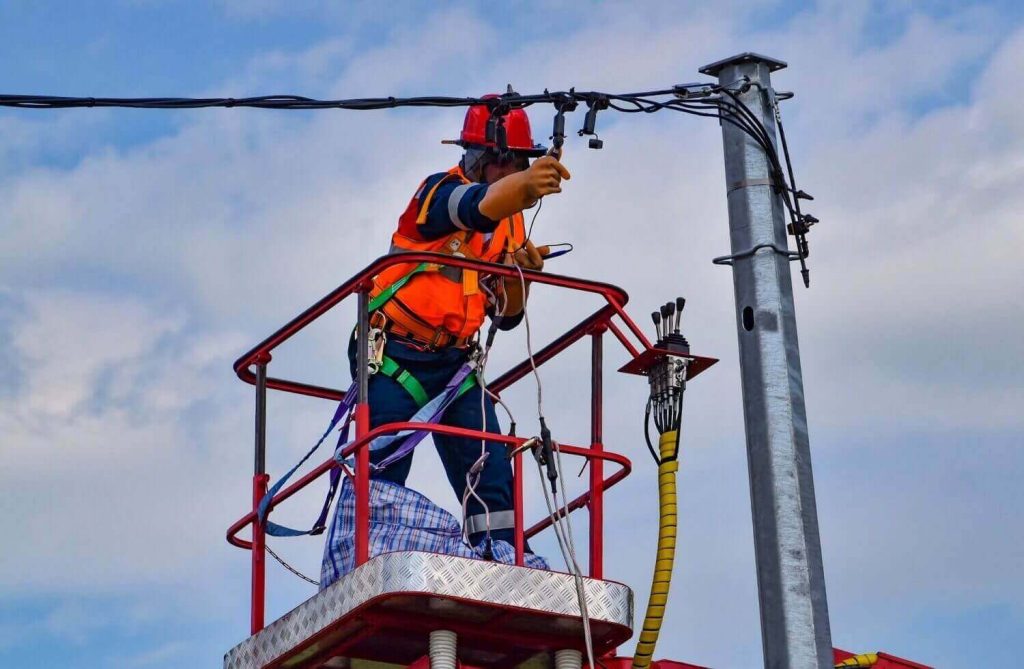
Conclusion
Municipalities and public works departments that do not utilize a CMMS may face a host of operational, financial, and regulatory challenges. The implementation of a CMMS can help overcome these issues by providing a structured and efficient system for maintenance management, asset tracking, and data-driven decision-making.



